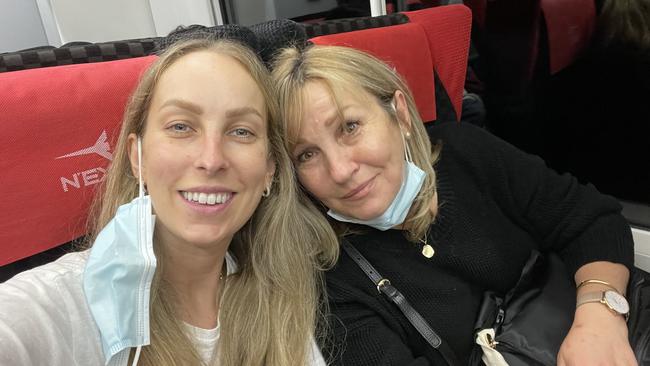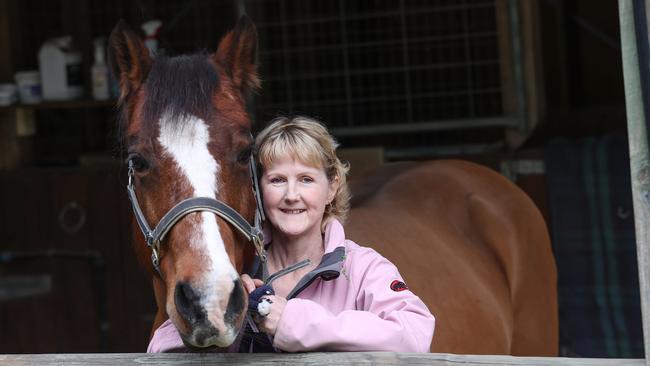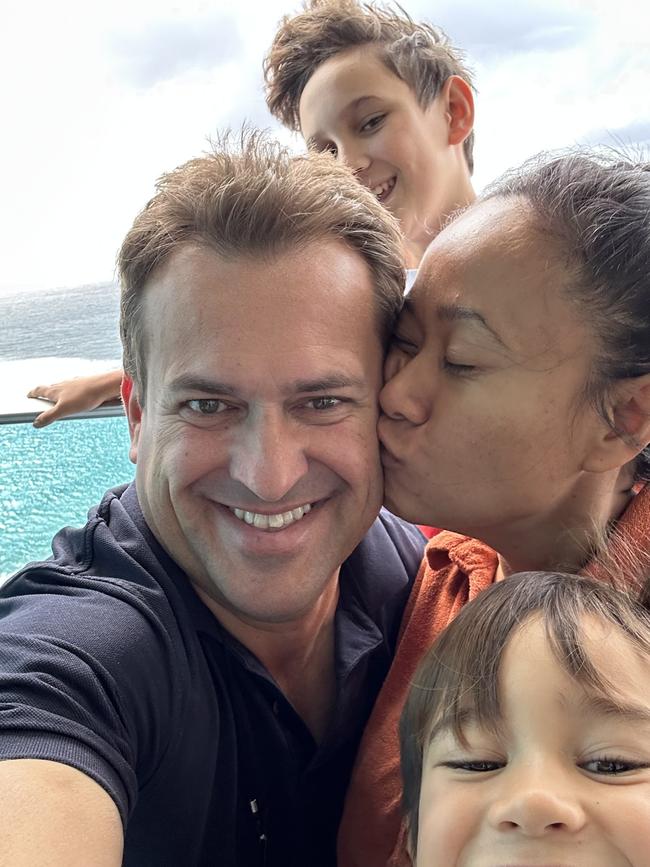Why 10,000 Aussies a year being forced to fund their own cancer treatment
Australia’s medicine subsidy scheme is so crippled by delay a staggering 10,000 patients a year are being forced to fund their own lifesaving cancer treatment.
Health
Don't miss out on the headlines from Health. Followed categories will be added to My News.
Australia’s medicine subsidy scheme is so crippled by delay a staggering 10,000 patients a year are being forced to fund their own lifesaving cancer treatment.
For the first time, we can reveal the true size of the problem that has left some sufferers with bills of up to $500,000 per annum – and the need to travel overseas for gruelling treatment.
Every year, each of our 930 cancer specialists is on average prescribing unfunded high cost therapies to 11 patients a year.
A further 16,000 people with cancer are recommended the drugs but, even more devastatingly, can’t afford to pay for them.
The results, of a pharmaceutical-funded study by research company IQVIA, lay bare the two-tier cancer roulette Australians are playing, where only the wealthy or those able to raise enough money from charity can afford lifesaving treatments.
The ‘cost of staying alive’ crisis is forcing desperately sick individuals to raid their super, sell their houses and beg for charity to fund the high cost drugs that allow them to stay alive.
The medicines have been approved for use in Australia but they are not yet funded by the government.
One key bottleneck is that some new cancer immunotherapies work across a range of cancers but the system requires pharmaceutical companies to mount a separate subsidy application for each different type of cancer, a process that is taking years.
Medicines Australia data shows it can take up to seven years for a new medicine to get a subsidy in Australia, 24 times longer than it takes to win a subsidy in the UK, Europe and Japan.
The system is so broken the federal government has ordered a major review.
Changes before the review include setting up an Innovative Drug Fund similar to the UK version, which subsidises lifesaving treatments while they seek subsidy approval.
A second plan would see the government fund medicines for all the types of cancer they fight,
rather than require separate applications for each niche cancer.

Rare Cancers Australia backed up the survey findings, saying it was aware of between 8000 and 10,000 Australians paying themselves for life saving medicines not subsidised by the nation’s Pharmaceutical Benefits Scheme (PBS).
“Many of those will be rare cancer patients. We are hopeful that the highly anticipated HTA review recommendations will provide realistic and pragmatic change to the PBS that will remove these inequities for Australian families. No one wants patients left behind because they can’t afford to pay,” Rare Cancer CEO Christine Cockburn said.
Government data shows nearly 40,000 Australians had to raid their superannuation accounts to pay for medical treatment, including cancer medicines, in 2022-2023.
The amount released from superannuation doubled to $730 million between 2018-19 and 2022-2023.
In addition, Go Fund Me said there had been 5472 cancer fundraisers launched in the last three years, many for medicines that cost more than $10,000 per dose.
Many of the families we spoke to had sold their homes to fund last resort treatments.
Oncologist Deme Karikios, whose PHD surveyed doctors about whether they recommended high cost unsubsidised treatments, said they were “doing it more and more often and there’s more and more treatments not on the PBS”.


Medicines Australia chief executive Liz de Somer said there were around 25 cancer medicines registered by the Therapeutic Goods Administration (TGA) but not yet subsidised by the PBS.
Most new treatments (69 per cent) are rejected for subsidy the first time they apply, forcing pharmaceutical companies to reapply on average two and a half times before a subsidy was granted, she said.
To fill the gap, many pharmaceutical companies have set up access programs where patients can obtain the medicine for free or at a discounted price.
In a sign things may be about to change, just last week the government stepped in to fast track funding for a $500,000 treatment for the deadly cancer neuroblastoma that affects preschoolers.
MSD, which makes high cost cancer immunotherapy KEYTRUDA, said it offers a shared cost program to help patients afford the treatment for types of cancers not yet subsidised for.
“The program is capped at $60,000. MSD acknowledges the cost of private pay may be out of reach for many Australians. We are actively working with the Australian Government to progress a Multi-Cancer Funding proposal. This would unlock PBS access to KEYTRUDA for approximately 20,000 patients over four years, and position Australia as a world leader in affordable access to immunotherapy.” the company said.
Bristol Myer Squibb, which makes high cost cancer immunotherapy treatment Opdivo, said the vast majority of its medicines were accessible through the PBS.
“BMS has a co-pay program for some patients that can’t access PBS available medicines however this is less than 0.39 per cent of total sales,” a spokesman said.
“BMS is looking forward to Federal Health Minister’s response to the Health Technology Assessment (HTA) review – and is hopeful that it will lead to medicines being listed on the PBS in a more timely manner; especially for patients with rare and less common cancers, who are especially disadvantaged by the current HTA system,” the company said.
ONE-IN-A-MILLION RARITY

Kathryn Berecic was trying for a baby using IVF when she was diagnosed with a one-in-a-million rare cancer of the appendix.
The 31 year old kindergarten teacher’s appendix burst, spreading cancer cells throughout her abdomen.
She endured 100 rounds of chemotherapy, two massive surgeries and even had “heated chemotherapy” swilled inside her stomach cavity.
However, the aggressive cancer kept returning.
“I had my ovaries, some bowel, uterus, spleen, gallbladder removed,” she said.
Her hope of staying alive now involves travelling to Japan multiple times a year and spending $150,000 on an experimental immune system treatment not subsidised in Australia.
Called adoptive cell therapy, the treatment is a type of personalised immunotherapy which involves harvesting natural killer cells from the patient’s blood, multiplying them and infusing them back into the body.


It is being combined with dendritic cell therapy which tags cancer cells so the body’s immune system knows what to fight.
“My cancer was growing up until I had my first trip to Japan. And ever since then it’s been stable,” she said.
Ms Berecic estimates she has spent more than $300,000 out of her own pocket on unsubsidised treatments in a desperate bid to stay alive.
She and her husband sold their home, moved back in with her parents and have sourced funds from them and a GoFundMe account set up by one of her friends.
“I’m just lucky that I had that GoFundMe money, and I’ve got amazing charities and organisations like Rare Cancers Australia,” she said.
She wants the government to consider a Centrelink payment for cancer patients who can’t work and said the government should fund cancer patients who need to access treatment overseas.
‘I GOT CANCER IN THE WRONG COUNTRY’

Michelle Le Grew believes she “got cancer in the wrong country”, having paid $90,000 out of her own pocket for her lifesaving breast cancer medicine.
The 53-year-old knew she had the cancer causing BRCA 2 gene and had her ovaries removed and a hysterectomy to prevent it.

In a devastating blow, though, she developed breast cancer while waiting for mastectomy surgery that was delayed multiple times.
She is now self-funding lifesaving treatment Lynparza, which is subsidised on the PBS but not for her specific type of breast cancer.
A key clinical trial showed that Lynparza reduces the risk of breast cancer returning within four years by nearly a third.
“I asked my doctor, if she were in my situation, would she take the drug and she said it would be a ‘no-brainer’,” she said.
Ms Le Grew scraped together the funds for the drug from an insurance payout after appeals for help to pharmaceutical company Astra Zeneca, Health Minister Mark Butler and even the committee which decides which drugs get subsidised were unsuccessful.
“The PBS process for getting medicines subsidised is painfully slow and patients die waiting for drugs to get on it,” she said.
“In this day and age, and in this country, it shouldn’t happen.
“I got cancer in the wrong country. If I lived in the UK, I would be able to get it.”
AUSSIE GOT US RESIDENCY TO GET CHEAPER DRUG
Australian businessman Chris Javkolovski had to become a US resident in order to access a lifesaving treatment for his rare genetic condition.
Although the treatment Belzutifan has now been approved for use in Australia, it is still not subsidised and costs $12,000 a month. He gets it for free in the US.
The 51-year-old father of two is one of 500 Australians with a condition called von hippel lindau that causes recurrent tumours in the brain, spine, eyes, kidneys, pancreas, adrenal glands, inner ears, reproductive tract, liver, and lung.


When he was diagnosed at age 19 Mr Javkolovski was told he wouldn’t survive past the age of 30 but he went on to build a remote staffing business now worth $60 million.
He has endured eight major surgeries including two to remove brain tumours and he survives with just part of one kidney.
The cost of treating the condition through surgeries funded by Medicare is way in excess of the cost of the new breakthrough medicine which is stopping the condition in its tracks and shrinking tumours, he said.
“I’ve met people who are going blind, losing their kidneys like me who don’t have the financial means to pay for this treatment,” he said.
“Now that modern medicine can tailor solutions specifically towards conditions we need to re-evaluate how they make decisions about subsidies.”
More Coverage
Originally published as Why 10,000 Aussies a year being forced to fund their own cancer treatment





